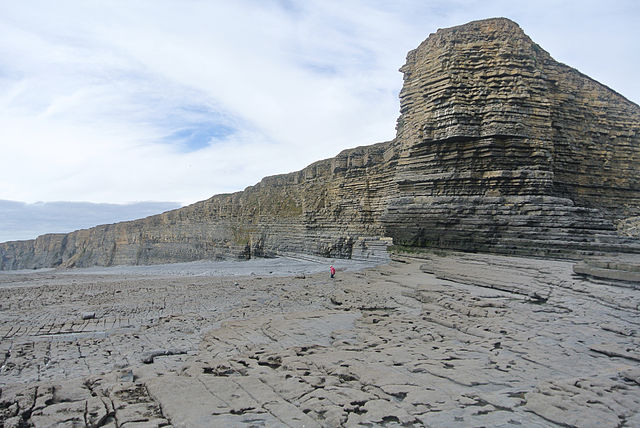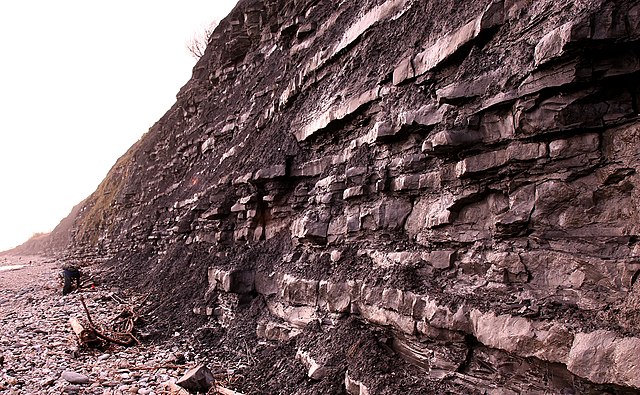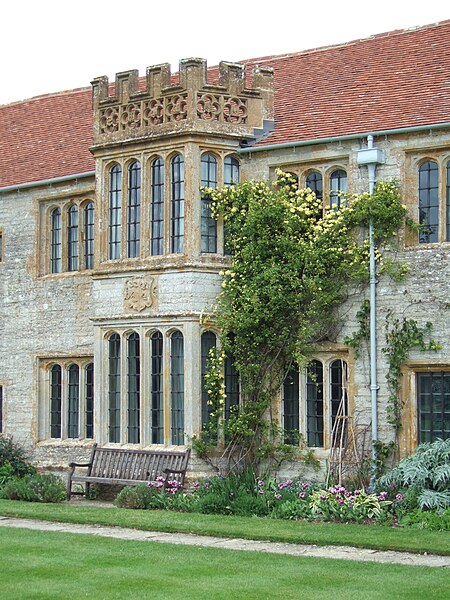The Blue Lias is a geological formation in southern, eastern and western England and parts of South Wales, part of the Lias Group. The Blue Lias consists of a sequence of limestone and shale layers, laid down in latest Triassic and early Jurassic times, between 195 and 200 million years ago. The Blue Lias is famous for its fossils, especially ammonites.
Lower Lias sequence exposed at Nash Point, Glamorgan, Wales
Blue Lias formation at Lyme Regis, Dorset
Lytes Cary, Somerset, built of Blue Lias with Ham stone dressings around the windows
Image: Merosaurus
The Jurassic is a geologic period and stratigraphic system that spanned from the end of the Triassic Period 201.4 million years ago (Mya) to the beginning of the Cretaceous Period, approximately 145 Mya. The Jurassic constitutes the middle period of the Mesozoic Era and is named after the Jura Mountains, where limestone strata from the period were first identified.
Portrait of Alexandre Brongniart, who coined the term "Jurassic"
Folded Lower Jurassic limestone layers of the Doldenhorn nappe at Gasteretal, Switzerland
Middle Jurassic strata in Neuquén Province, Argentina
Tidwell Member of the Morrison Formation (Upper Jurassic), Colorado








